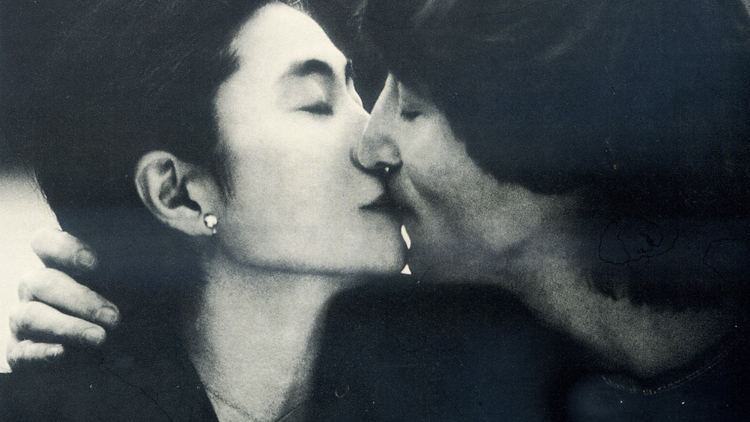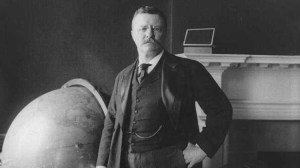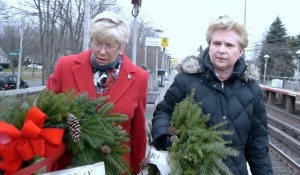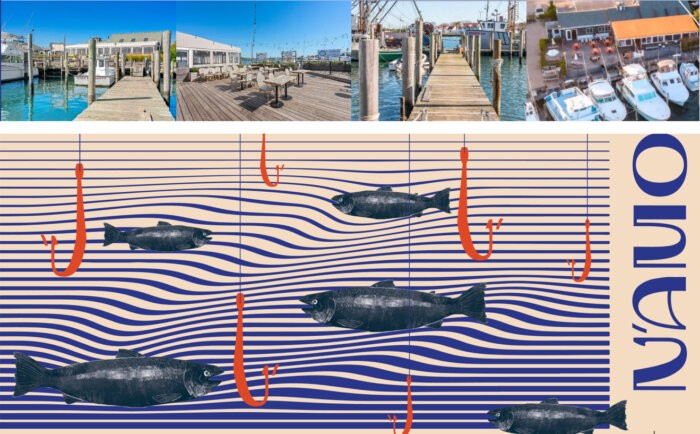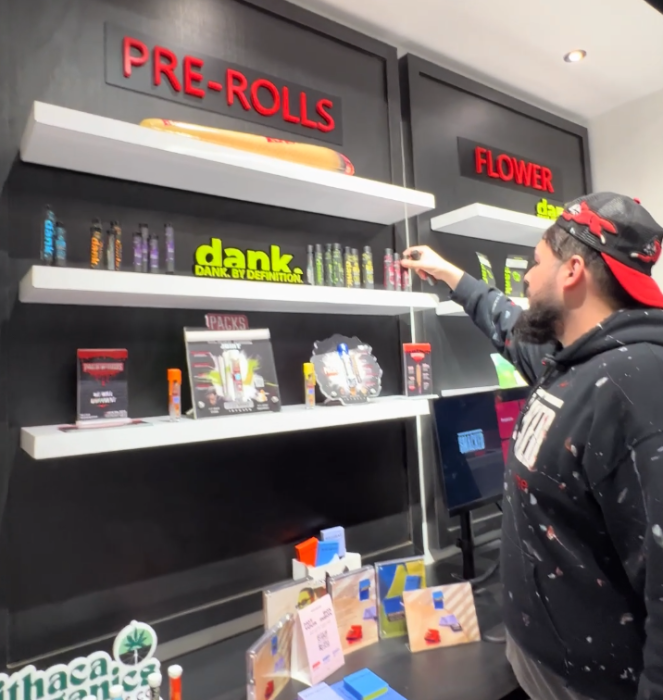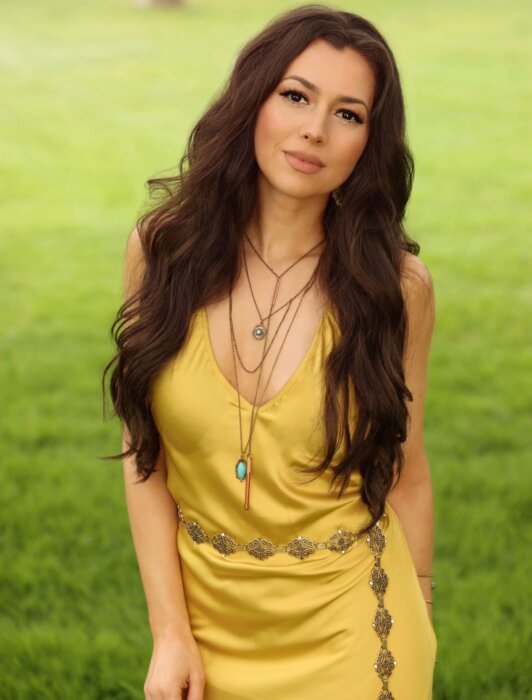By the time John Lennon and Yoko Ono purchased a secluded, sprawling mansion overlooking Cold Spring Harbor in November 1979, the Beatles had been broken up for nearly a decade and it’d been almost five years since John had released an album of his own.
Following his notorious two-year “lost weekend” away from Yoko with May Pang and Harry Nilsson in California, he’d spent the past four years away from the spotlight, out of the studio, and for the most part, away from his rock and roll friends. He was mostly holed up at The Dakota, rearing their son Sean, born on John’s 35th birthday in 1975. Two days before Sean’s birth, a state Supreme Court judge had reversed a deportation order, granting John legal stay in the United States and ending a vicious campaign by the Nixon administration to have him sent back to England.
He’d later describe himself during this period as a househusband, telling Playboy magazine that “I’ve been baking bread and looking after the baby.”
“But what have you been working on?” the writer persisted.
“Are you kidding? Bread and babies, as every housewife knows, is a full-time job.”
The Lennons—well, Yoko—had been on a “massive real estate shopping spree” that fall, writes John’s personal assistant at the time, Fred Seaman, in a 1991 tell-all The Last Days of John Lennon: A Personal Memoir, who was sent to scout out potential homesteads in, among other places, upstate New York, New Jersey, Virginia, Maryland, Pennsylvania, Rhode Island and Long Island. (He’d later plead guilty to one felony count of grand larceny in connection with the disappearance of some of John’s personal journals, sentenced to five years’ probation in 1983.)
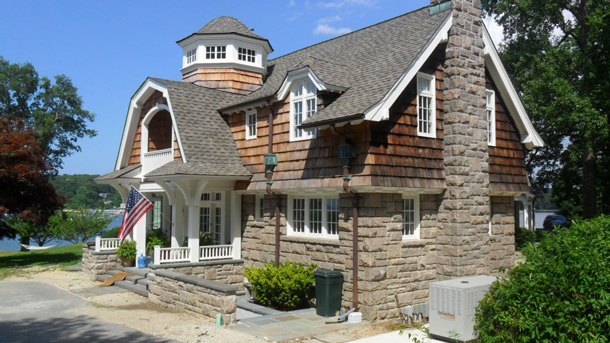
When the then-26-year-old saw that fantastical Long Island house on the hill, tucked away on a bluff off a private road in the secluded community of Laurel Hollow, Seaman was convinced it was the one. It just had to pass Yoko’s psychics.
“Of the dozens of properties I scouted out for the Lennons in 1979, none seemed more suitable than a waterfront mansion overlooking Cold Spring Harbor on Long Island’s North Shore,” he writes. “The Tudor-style house, called Cannon Hill because of the cannon by its swimming pool, nestled at the bottom of a winding driveway and from a distance looked like a gingerbread house. From the moment I first laid eyes on the old ivy-colored wooden mansion I knew it would be ideal for John and Yoko.
“It had more than a dozen rooms on three floors, including a large master bedroom with a balcony that offered a spectacular view of the harbor,” he continues. “There was even a small beach, as well as a private dock. John had begun to hint that he wanted to buy a boat, and this looked like the perfect place for it.”
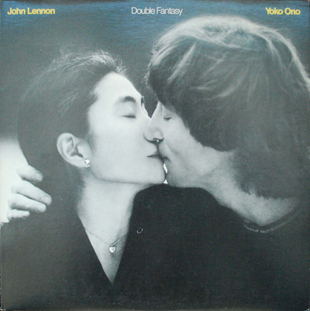
“The rambling wooden house dated from the Eighteenth Century whaling era and took its name from the antique cannon embedded beside the swimming pool,” concurs author Philip Norman in 2008’s John Lennon: The Life. “With it went a private beach and dock, looking out on a panorama of motorboats, sailboats, and skiffs, much like the scene Aunt Mimi saw from her bungalow in faraway Poole.”
John’s “Aunt Mimi,” Mary Elizabeth Smith, was the older sister of his mother, Julia, who’d separated from John’s father, Alfred, and given her guardianship of the then-5-year-old. Mimi raised John for most of his childhood, though John had grown close to his mother (who’d taught him how to play the banjo and ukulele) before she was struck and killed by a drunken off-duty police officer when John was 17.
Following the success of the Beatles, John bought Mimi a bungalow in Poole on the south coast of England. They remained close the rest of his life. He never got over Julia’s death.
Biographers and former employees have painted myriad portraits of the Fab Four leader—paranoid acid-dope fiend, violent and tortured sexual deviant, depressed genius are but a few. The Beatle known for his humanitarianism and social activism was a complex man, but by all accounts, the secluded estate up on that bluff was a place of refuge for the then 39-year-old-turned-40 superstar-turned-caring father, who relished in its calm-yet-vibrant, new, seafaring environ.
Cannon Hill was a retreat, somewhere to relax, escape, collect himself, break off a splinter of peace, find inspiration.
That’s also the portrait painted by home video recordings of the family’s time there, taken by John (and Seaman), which found its way to You Tube in recent years. The footage offers rare, never-before-seen glimpses of the Lennons’ day-to-day life within its ivy-laced walls. It’s raw, uncensored, and personal.
“Welcome, my dear!” says an ebullient, scraggly bearded John, scurrying to the door to greet Yoko. “Have a seat. Welcome to Cold Spring Harbor.”
“This is a gorgeous place,” she tells him, while John pours her some tea.
“It’s nice to wake up here, isn’t it?” he asks her the next morning as he lights a cigarette.
“So different than waking up in New York,” she says, lighting a smoke, too.
There’s footage of the two gazing out the window across the harbor, Yoko commenting about the seagulls. A mop-topped Sean is lying atop Yoko on a couch as they both laugh and squeal. The family is seated in lawn chairs out on the bluff, John, his hair pulled tightly back in a samurai bun, sketching diagrams for Yoko of a nearby house that’s “the most beautiful” one he’s ever seen. And then there’s John, acoustic guitar in hand, performing two takes of “Oh, Yoko!” to the camera, with tidbits of his trademark humor:
“Welcome, Missus Lennon and your wonderful mother Baba,” he says as an intro to the first. “Welcome to Cold Spring Harbor. This is a recitation, which you might call ‘Oh, Yoko, Part Two,’ circa 1970, one, two, or three,” he adds, striking a chord. “Maybe this time we’ll get it.”
“God bless you, mom, thank you, dad, peace on Earth, goodwill to all men, but don’t forget any women, of course,” he jokingly bows at the end of a second take.
John would often go antiquing. He’d venture into Huntington for flowers and health food.
It’s at Cold Spring Harbor, too, that John takes up sailing.
“He was interested in sailing all his life,” Tyler Coneys, of Coneys Marine in Huntington, tells the Press.
Tyler sold him a 14-foot O’Day Javelin, which John subsequently named Isis, after the Egyptian god of fertility, and was almost immediately enlisted to take John and—“against Yoko’s wishes,” he says—Sean for sailing excursions “frequently.”
“I said, ‘Bring him, she’s not here,’” the then-25, now 59-year-old laughs. “And that was a good thing, because of the way things went down, that was a good decision.
“We were always talking about stuff,” Tyler says of their time out on the water. “He was very interested in regular people.
“He was a regular guy,” he adds. “One of the boys.”
Little did Tyler know that he’d be one of just a handful to accompany John on a defining trip in rock history to Bermuda. Apparently, it was written in the stars.
“In June, he was told by his better half that ‘you should go on a trip now,’” Tyler recalls, quoting Yoko. “‘Because it was in the stars,’ the astrology. ‘So it’d be good for you to go on a trip.’ And he did. So it had to be all put together really quickly.”
Before long, John, Tyler and his cousins Kevin and Ellen Coneys were screened by one of Yoko’s psychics. Soon they were flying out of Republic Airport bound for Newport, R.I., where they boarded a 43-foot boat named the Megan Jaye and met its captain, a burly Beatles fan named Hank Halsted.
What would normally have been a four- or five-day trip took an extra day “because we had a big storm,” says Tyler. “We were blown away from Bermuda for a little while, off-course.”
What happened next cements the journey into rock and roll (and boating) mythology.
John had mostly served as the cook on board, says Tyler, but when the ocean’s ferocity was at its worst and the experienced crew was overtaxed, somehow the musician from Liverpool managed to steer the ship safely through it.
“At one point, he was the only person awake on the boat, at the helm, for a couple of—for awhile, during the storm, at the peak of the storm,” Tyler says. “It was the most exciting adventure you could have, without dying.”
Once ashore, he says John was jubilant. They celebrated with a huge feast.
“It was pretty amazing,” Tyler says of the trek. “He always wanted to do that and he finally did. He was forced to do it, almost.”
https://www.youtube.com/watch?v=6UVjHHedxVs
It’s during that trip that John began writing music again, capitalizing on the prodding of a fierce, if imagined, rivalry between former bandmate Paul McCartney, whose hit single at the time “Coming Up” had also motivated him. Tyler says John had been jotting down notes throughout the journey. Once in Bermuda, his creativity was awakened, with a vengeance.
He spent two months on the island: playing guitar, singing, writing, recording, and honing the songs that would comprise the bulk of Double Fantasy—released in November 1980 and named after a species of freesia he saw while on a trip with Sean to a Bermuda botanical garden—and 1984’s posthumous Milk and Honey.
Tyler and crew’s fatefully epic journey made it onto the album, too—immortalized on the record and by John’s handwritten doodles and verses in the Megan Jaye’s logbook:
“He’d write down my lick, it’s one of his album discs, and it’s in the diagram of the Megan Jaye: [Dear Megan,] ’There’s no place like nowhere, T.C., 1980,’” says Tyler. “That’s me, he put that in the log and quoted me. Yeah. That was on the Double Fantasy album, ‘When no place is the place to be.’”
“Suddenly, I got the songs,” John later said in his last interview, given just hours before his tragic demise. “Suddenly I had, if you’ll pardon the expression, diarrhea of creativity.”
On Dec. 8, 1980, after returning from the Record Plant Studio, John was entering The Dakota to say good-night to Sean when he was shot four times in the back by Mark David Chapman, a fan he’d signed an autograph for earlier that day.
Tyler was at Cannon Hill when the fateful call came.
“It was very eerie,” he recalls. “It was just pretty unbelievable. I look out the windows and there were crows everywhere.
“All over, all over the yard,” Tyler says. “Until recently I never knew that that’s called a ‘murder,’ when there’s that many crows together…which kind of made my hair standup.”
Imagine.



